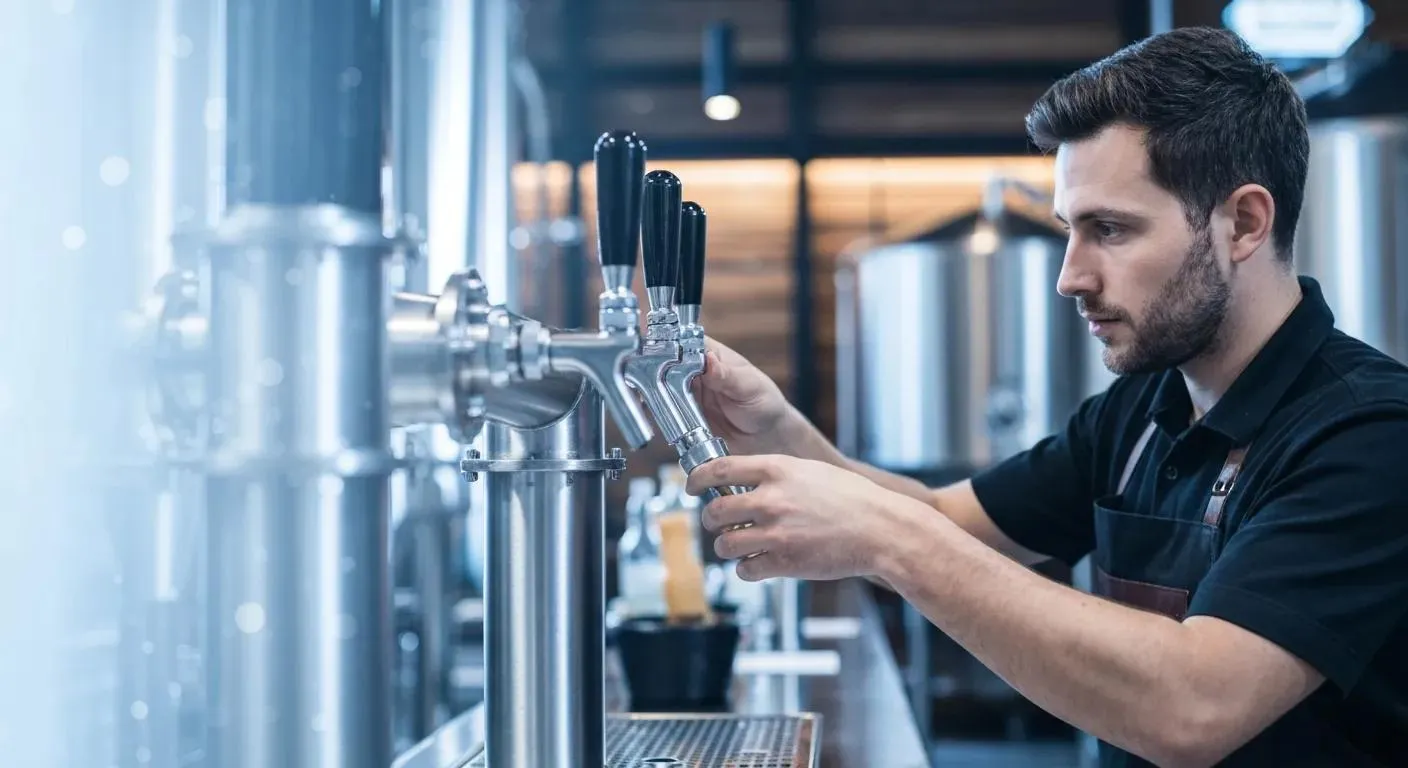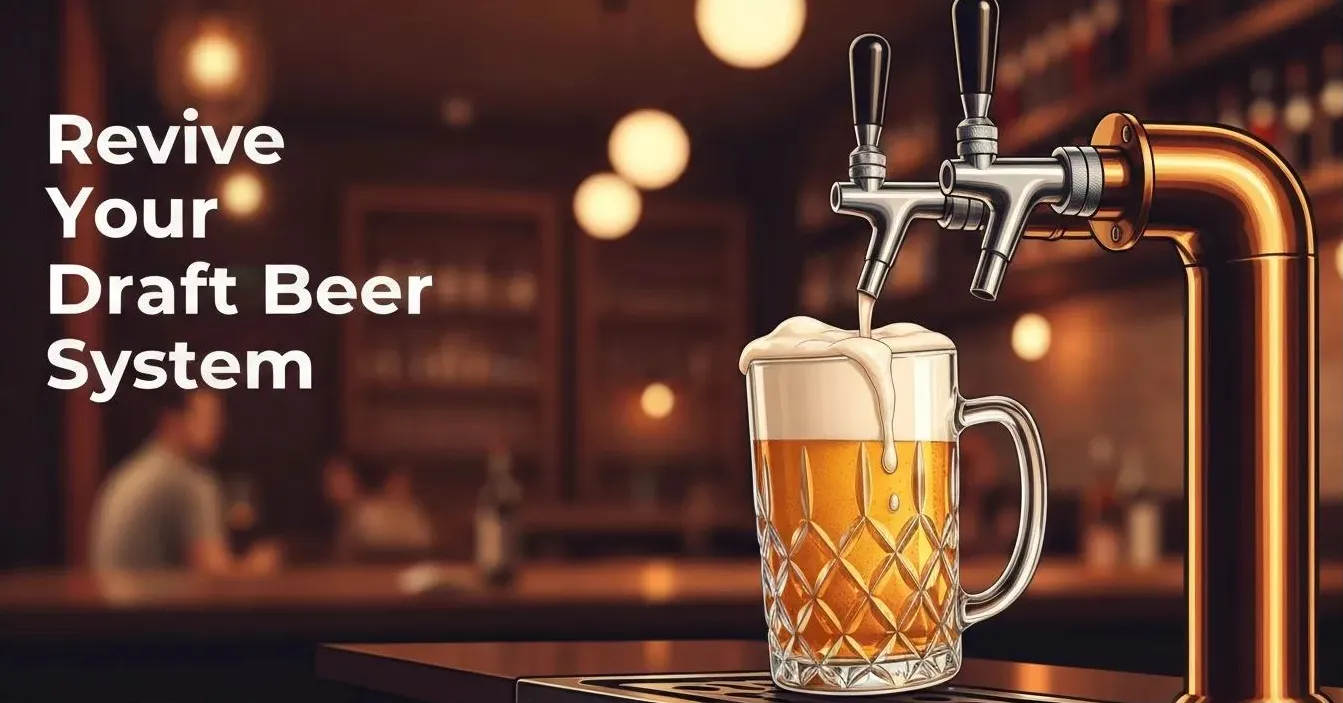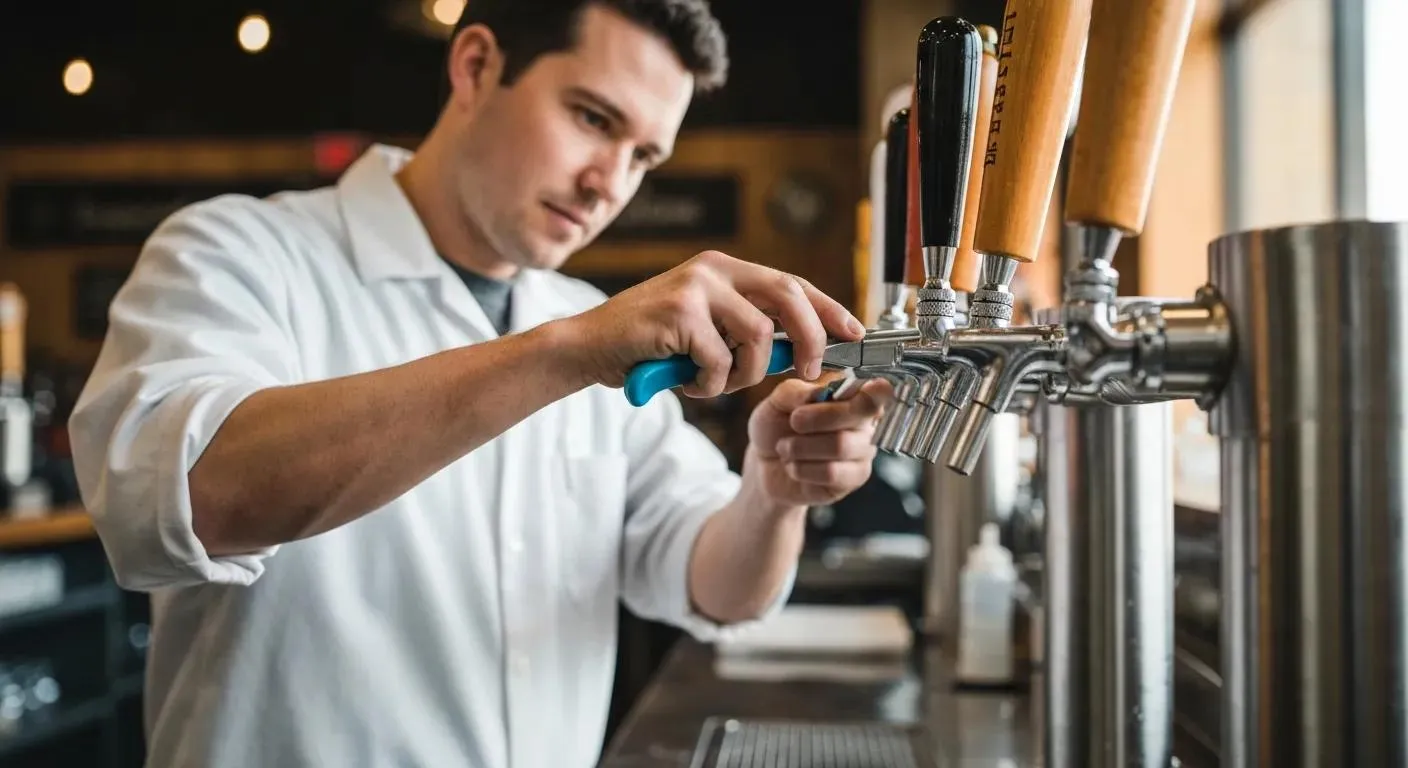Cocktail Keg Essentials: Serving Drinks in Bulk with Style

Cocktail kegs are an innovative solution for serving beverages in both high-volume venues and at at-home bars. They offer a convenient and efficient way to dispense various cocktails. These kegs utilize a pressurized container which is typically made of stainless steel, designed to keep pre-mixed cocktails fresh and ready to serve.
This system has become increasingly popular among bartenders and hosts who want to provide consistent quality and flavor in every glass. They also want to avoid the time-consuming process of mixing individual drinks.
A bar manager plays a crucial role in overseeing the implementation and management of cocktail keg systems in bars and at events, ensuring a seamless and high-quality beverage service.
The trend of kegged cocktails is part of the larger craft movement, combining the art of mixology with the science of carbonation and storage. Kegs come in different types and sizes, from smaller, portable options to larger, more permanent fixtures, each suited to different drinks and occasions.
The pressurization and carbonation techniques vary depending on the cocktail. Certain drinks benefit from the added fizz. Proper setup is crucial to maintain the taste and quality of the cocktails over time. This includes using 100% stainless steel contacts and all-steel contact components.

Key Takeaways
- Cocktail kegs offer a convenient way to serve pre-mixed drinks.
- Different keg types and carbonation methods suit various cocktails.
- Correct setup and maintenance are essential for optimal taste and freshness.
Understanding Cocktail Kegs
Cocktail kegs represent a modern twist in the beverage industry, merging the tradition of kegging with the craft of mixology. The focus lies on efficiency and maintaining the quality of the drink for both the customer and the bar or restaurant.
History of Kegged Cocktails
The keg has long been associated with beer, but the history of kegged cocktails is a more recent chapter in the world of mixology. Originally perceived as a symbol of less refined drinking environments, the keg has been reimagined by bartenders eager to innovate. This movement has transformed the keg into a vessel for high-quality and sophisticated beverages, highlighting the adaptability and evolution of drinking culture.
Benefits of Using Cocktail Kegs
Cocktail kegs offer a range of benefits that are advantageous for both the customer and the bar or restaurant. Some key advantages include:
- Consistency: Each pour from a cocktail keg delivers the same flavor profile and strength, ensuring a repeatable experience for customers.
- Efficiency: Bars can serve cocktails more quickly, reducing wait times and increasing customer satisfaction.
- Volume: Cocktail kegs allow for bulk preparation, which is ideal for high-volume establishments or events.
- Freshness: The sealed environment of a keg keeps cocktails fresh and protects the quality of the drink over time.
- Sustainability: Kegs reduce the need for individual bottles and can be reused, offering a more environmentally friendly option.
By leveraging the practicality of kegging, venues can streamline service and provide a consistently high-quality product, affirming their commitment to both innovation and customer service.
Types of Cocktail Kegs
In the world of cocktail kegs, two main types stand out for their utility and compatibility across different dispensing systems. The Cornelius Keg, often referred to as a "Corny," is a favorite among homebrewers for its convenience and adaptability. On the commercial front, the Sankey Keg is known for its widespread use in larger-scale operations, such as bars and restaurants.
Cornelius Keg
A Cornelius Keg, or Corny for short, is a staple in the cocktail-on-tap scene. These kegs are made of stainless steel, providing durability and ensuring that the quality of the cocktail is preserved. A Cornelius Keg typically holds about 5 gallons of liquid, perfectly suiting the needs of smaller events and gatherings. Its design allows for easy opening, cleaning, and filling. They connect to the dispensing system using a ball lock or a pin lock, which makes it straightforward to switch between different batches of cocktails.
Sankey Keg
A Sankey Keg is more common in commercial environments due to its larger capacity and robust build. Like the Cornelius, it is also crafted from high-quality metal ensuring the longevity of use and integrity of the drinks within. Sankey kegs feature a single-valve system known as a coupler that connects to the tap. This system is preferred for its added security, as it helps prevent leaks and allows for more consistent carbonation levels. Sankey kegs come in a variety of sizes, the most popular being the half-barrel keg which holds approximately 15.5 gallons of liquid, making it ideal for high-volume service.

Carbonation Techniques
Cocktail enthusiasts looking to serve drinks in large batches, especially those interested in the increasingly popular category of carbonated cocktails, can employ carbonation techniques to add fizz and enhance the beverage experience. Two primary methods are often used: force carbonation and natural carbonation. This approach is particularly beneficial for serving carbonated cocktails on tap, as it involves using nitrogen or carbon dioxide tanks and regulators, along with the necessary kegging equipment, to ensure the perfect level of carbonation.
Force Carbonation
Force carbonation involves infusing the cocktail with CO2 under pressure. This method provides consistency and speed, making it suitable for commercial settings or at-home bartenders with guests who prefer quick results.
The process requires a CO2 tank and a regulator that allows for adjusting pressure, which is measured in PSI (pounds per square inch). The ideal carbonation level ranges between 12 to 14 PSI, although certain recipes may call for a higher pressure. It is important to maintain the keg at a steady temperature, preferably around 38 degrees Fahrenheit, to ensure proper CO2 dissolution.
Natural Carbonation
Natural carbonation, on the other hand, takes a more traditional approach. It employs yeast to ferment sugars in the cocktail mix, producing CO2 naturally over time.
The main advantage of this method is the unique flavor profile that can develop from the fermentation process. The carbonation process here can vary in time from a few days to several weeks, and the resulting carbonation may have less predictability compared to force carbonation. During this period, the temperature should be controlled carefully since it impacts the rate of fermentation and, consequently, the level of carbonation.
Cocktails Suitable for Kegging
Kegging cocktails offers a practical solution for serving beverages at large gatherings, ensuring both consistency in flavor and efficient service. Choosing the right cocktails to keg and making the necessary recipe adjustments are critical for successful kegging. It's essential to preserve the quality of craft cocktails when selecting drinks for kegging, ensuring that the art of bartending and cocktail crafting is not lost in the process.
Scaling up a single drink recipe to a large batch is a key challenge in preparing for kegging. Batching cocktails is a crucial step, involving the careful mixing and labeling of cocktails, perfecting the recipe for large-scale serving, and considering dilution rates for different types of cocktails.
Choosing the Right Cocktails
The best candidates for kegging are cocktails that are served in larger quantities and are meant to be consistent in flavor from one serving to the next. Punches, with their balanced combination of fruits, spices, and spirits, are ideal for kegging, as the extended storage in a keg allows the flavors to meld together. Cocktails without a lot of citrus or dairy generally fare better in a keg because these ingredients can degrade or separate over time.
In contrast, drinks that rely heavily on fresh, delicate herbal flavors or require a shaken texture—such as those with egg whites—might not be the best choice for kegging as they can lose their nuanced profiles or textural components.
Recipe Adjustments for Kegging
When kegging cocktails, adjustments in recipe proportions are necessary to ensure that the alcohol content add sugar, dilution, and flavors are balanced correctly in a larger format. Here's a guideline on how to approach this:
- Alcohol Content: The strength of the cocktail should be controlled to ensure it remains enjoyable and palatable over the duration of the event. This often means slightly lowering the proof of the cocktail.
- Dilution: This is an essential factor, as cocktails on tap don't benefit from the minute addition of ice. Pre-dilution with water must be calculated as per the original cocktail recipe to mimic the dilution from shaking or stirring.
- Flavors: Amplify key flavors slightly to account for the chilling effect of the keg, which can mute subtler notes. Sweeteners and acids need to be carefully balanced to prevent the kegged cocktails from becoming cloying or overly sharp.
Setting Up a Draft Cocktails System
When installing a keg system for cocktails, precision, and proper equipment selection are vital for an optimal setup. It involves assembling keg taps and faucets for serving and draft towers and lines for proper beverage chilling and flow.
Keg Taps and Faucets
Keg taps, also known as couplers, are instrumental in connecting the keg to the keg system, allowing the liquid to flow out while letting gas in to maintain pressure. There are different types of taps for various keg styles; getting the right one ensures that the beverage can be served smoothly.
Faucets attach directly to the beer tower and come in a variety of materials, such as stainless steel or brass. Stainless steel is advisable due to its resistance to corrosion and ease of cleaning.
- Choosing a Keg Tap: Match the keg tap to your keg type (e.g., D system for most American beers).
- Selecting Faucets: Opt for stainless steel faucets for longevity and flavor protection.
Draft Towers and Lines
Draft towers are the visible part of the keg system rising from the kegerator or bar top. They often contain one or more faucets. Draft towers must be installed with a snug fit to prevent leaks and temperature loss.
The lines, or tubing, connect the keg tap to the draft tower. These need to be of food-grade quality. Preferably, the draft lines themselves should also be insulated to keep the cocktail properly chilled as it travels from keg to glass.
- Installing Draft Towers: Ensure a tight seal between the tower and the kegerator to maintain temperature and prevent leaks.
- Selecting Lines: Use insulated, food-grade lines to maintain beverage quality and temperature.
Fermentation is not typically relevant within the context of setting up a system for serving kegged cocktails. The process for these beverages does not call for in-keg fermentation. However, understanding the importance of maintaining the right temperature and pressure during chilling and serving tap cocktails is crucial in delivering the perfect glass every time.
Storage and Maintenance
Proper storage and regular maintenance are crucial for the longevity and quality of cocktail kegs. Attention to details such as temperature control and sanitation can significantly impact the beverage's taste and safety.
Cleaning and Sanitation
Before and after filling, cleaning kegs is paramount to avoid contamination and spoilage. They should employ a two-step process: cleaning with a brewery-approved detergent to remove residues, followed by sanitizing with a no-rinse solution to eliminate bacteria. Remember, even traces of oxygen left after cleaning can spoil the contents, so thorough purging is necessary.
- Cleaning:
- Use brewery-approved detergent
- Rinse thoroughly with hot water
- Sanitizing:
- Apply a no-rinse sanitizer
- Purge keg with CO2 to remove oxygen
Storage Conditions
The ideal storage conditions for cocktail kegs demand a consistent and cool environment. Kegs should be kept at temperatures between 36°F and 42°F to maintain optimal flavor and carbonation levels. Fluctuating or extremely cold temperatures can degrade the quality of the cocktail and should be strictly avoided. Furthermore, kegs must be stored upright to prevent leaks and ensure proper gas pressure balance.
- Temperature: 36°F - 42°F (2°C - 6°C)
- Position: Kegs stored upright
- Environment: Cool, consistent, away from direct sunlight
Serving Kegged Cocktails
Optimal dispensing and carbonation are crucial to serving kegged cocktails that retain their intended taste and texture. A bartender must control these elements to ensure a high-quality drink. Additionally, keg systems are also capable of serving wine on tap, offering benefits such as maintaining quality through stainless-steel liquid contact, using barrier lines to limit resistance, and employing a Nitrogen gas tank and regulator for non-carbonated wines.
Dispensing Techniques
When dispensing kegged cocktails, it's essential to have the right gas setup. Still, cocktails typically use nitrogen because it doesn't dissolve in liquids as easily as carbon dioxide, resulting in a smoother drink. In contrast, cocktails that require fizz benefit from CO2 to maintain the desired level of carbonation.
To first serve wine, attach the keg to the appropriate gas cylinder and utilize a tap to pour the drink. Dispensing at the right temperature, usually cold, is also vital for both taste and to reduce foaming.
Managing Foam and Fizz
To manage foam and fizz in kegged cocktails, a few factors come into play:
- Carbonation Levels: The CO2 pressure, which affects carbonation, should match the type of cocktail served. A higher pressure is necessary for a soda-like fizz, whereas a lower pressure is needed for gently carbonated water or cocktails.
- Temperature: Cold temperatures help to reduce foam and maintain the carbonation in the cocktail. Kegged cocktails should be dispensed between 32 to 38 degrees Fahrenheit to ensure the drink is refreshing and the carbonation is retained.
Alternative Uses for Cocktail Kegs
Cocktail kegs are not exclusively for alcoholic concoctions; their versatility extends to pouring a variety of non-alcoholic beverages as well. These kegs can conveniently serve drinks at large gatherings or for home use, ensuring quality and freshness.
- Juice: Incorporating fruit juice with water in cocktail kegs allows for the creation of refreshing fruit sodas or flavored sparkling waters. Utilizing fruit purees and extracts can further enhance the experimentation with new flavors in kegged beverages.
- Draft Wine: Storing wine in kegs rather than bottles offers significant benefits, including cost-effectiveness and maintaining the quality of the wine. Draft wine is an environmentally friendly option that is gaining popularity for both commercial establishments and home use.
Serving Non-Alcoholic Beverages and Wine
- Coffee: Ideal for serving large batches of cold brew, a cocktail keg can keep coffee fresh and ready to serve, especially at brunches or office events.
- Juice: Juice blends can be stored and served from a cocktail keg, making it a great option for breakfast buffets and health-centric events.
- Homebrew Soda: Those who craft their own sodas can carbonate and serve them efficiently from a keg.
- Cider: Both alcoholic and non-alcoholic versions of cider can be kept crisp and bubbly in a cocktail keg.
- Pisco and Mojito Mocktails: Create non-alcoholic versions of classic cocktails, like Pisco Sour and Mojito, and dispense them from a keg at your next party.
- Wine: Even though it's traditionally alcoholic, non-alcoholic wines can also be served from a keg, which preserves their flavor and prevents oxidation.
- Lagers and Ales: For those who enjoy the taste of beer without the effects of alcohol, non-alcoholic lagers and ales are perfect candidates for kegging.
Summary
Kegged cocktails offer a modern twist on traditional drink service. They provide convenience and quality in beverage catering for events and home entertainment. Bartenders and enthusiasts are drawn to the efficiency of serving multiple cocktails swiftly without compromising on taste or freshness.
One of the primary advantages of this method is the consistency it brings to drinks. Each cocktail is premixed in a keg, ensuring that every serving has the same flavor profile and strength. Moreover, the keg system is portable and compact, making it ideal for different event settings—from backyard barbecues to wedding receptions.
Carbonation adds a refreshing effervescence to cocktails, and it can be controlled precisely when kegging beverages. Choices of gas—nitrogen for still cocktails or CO2 for sparkling ones—further customize the drinking experience. Below are the essentials of kegged cocktail preparation:
- Recipe Scaling: Multiply ingredients to suit the keg volume.
- Gas Selection: Use nitrogen or CO2 based on the desired fizz.
- Pressure Settings: Adjust to achieve a perfect flow and carbonation level.
Maintenance is a breeze. It involves a simple process of cleaning the equipment regularly to prevent flavor tainting from residue buildup. With proper care, a keg system offers both practicality and enjoyment, ensuring cocktails are served cold, fresh, and delicious.



